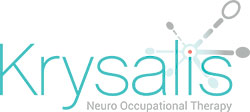Epileptic seizures strike one in ten of every traumatic brain injury (TBI) survivor - but there may soon be a way to slow them down…

Research involving mice has shown it is possible to reduce the number of seizures after a brain injury.
But the time the treatment starts is crucial, and if the treatment is stopped, unfortunately so do its benefits.
Scientists have known for some time that new neurons (brain cells) develop after a brain injury and are linked with epilepsy.
But it was the removal of these new neurons by a University of Texas at San Antonio (UTSA) team that led to the decrease in epileptic seizures.
"We already know that new neurons contribute to epilepsy, but we didn't know if we could target them post-injury, after seizures have already started" said Jenny Hsieh, Professor in Cell Biology and Director of UTSA’s Brain Health Consortium.
“Having the ability to do this would be clinically relevant, because the early warning signs of epilepsy are the seizures themselves."
During a seizure, there is a sudden abnormal electrical disturbance in the brain that results in an array of symptoms depending on the type of seizure experienced.
But those who suffer a seizure a week after suffering head trauma are 80% more likely to suffer another one as time goes on.
The UTSA team found that if the new neurons were removed after eight weeks, and this treatment continued for over four weeks, there was a 65% reduction in seizures.
And although this reduction was not permanent if treatment was stopped, the team remains excited by the new possibilities this new approach presents.
"While we cannot stop the first seizures, we can try to prevent the secondary seizures. This is very exciting and may lead to new therapeutic strategies."
Prof Hseih, UTSA Director.
What are epileptic seizures?
The nature of an epileptic seizure varies according to the part of the brain that is affected.
Seizures can occur while asleep or awake and generally last for a few seconds or minutes.
When they occur after a brain injury, they generally present as follows:
Simple partial (focal) seizures/auras/warnings -
- Can precede a tonic-clonic seizure.
- Lurching feeling in the stomach.
- A feeling that events have happened before (déjà vu).
- Unusual smells or tastes.
- Tingling in limbs.
- Experiencing intense fear or joy.
- Body twitching/stiffness.
- Episode lasts less than a minute.
- Consciousness maintained.
- Able to remember it.
Complex partial (focal) seizures –
- Loss of awareness.
- Sudden emotional outburst.
- Lip smacking.
- Hand rubbing.
- Random vocalisation.
- Grimacing.
- Unusual arm movements.
- Picking at clothes or fiddling with objects.
- Abnormal chewing or swallowing.
- Unable to remember it.
Tonic-clonic seizures (formerly known as ‘grand mal’) –
This comprises of two stages; an initial ‘tonic, stage, shortly followed by a second ‘clonic’ stage.
Tonic stage –
- Sudden loss of consciousness and falling.
- Body stiffening (tonic).
Clonic stage –
- Rhythmic jerking of limbs (clonic).
- Loss of bladder/bowel control.
- Biting tongue/cheek.
- Breathing difficulties.
- Lasts a few minutes but can be longer.
- Headache.
- Difficulty remembering it.
- Tiredness.
- Confusion.
Can epileptic seizures be treated?
Current treatments to reduce or stop epileptic seizures include anti-epileptic medications which can be taken singly or in combination depending on their effectiveness.
For further information and advice on how to best manage epileptic seizures after brain injury, talk to your neuro OT or neurologist.
We are passionate about occupational therapy and neurological rehabilitation. ‘Talking heads’ is a means of bringing together individuals and professionals interested in brain injury. The blogs, stories, films, current research and news items aim to inform and spark moments of inspiration, reflections and points of discussion. Talking Heads is here.

